Sigil Basics
In recent weeks the subject of sigils has come up in several different quarters of my life which has caused me to revisit what I know about these obscure occult symbols. There is probably no other aspect of magick that is so commonly misunderstood as these iconic lineal figures. Often they are attributed with having an intrinsic magickal power and some are so commonly used that most people would not even think of them as sigils at all.Put simply, a sigil is a symbol that represents a very specific force, most commonly a unique entity in a simple, recognizable graphic icon. The Oxford English Dictionary defines sigil as a seal or signet and gives its derivation as signum, a mark or a token which survives in the archaic use of the word to mean a small image. It also defines it as An occult sign or device supposed to have mysterious powers and this usage first appears in literature from the 1650s. There is another school of thought that derives the word from the Hebrew סגולה which has been erroneously translated to mean an item of spiritual effect or a talisman but it more accurately translates as small possession making this derivation doubtful.
A more practical definition of a sigil by Israel Regardie who wrote; the word Sigil merely means ‘signature’. So that the sigil of an Archangel is really the symbolic signature of that Being. These sigils were originally extracted from the traditional Kameas or magical squares. Even this only defines a small set of symbols out of the larger group called sigils and really just refers to the symbols employed by ceremonial magicians to represent the various spirits and angels that they conjure in their operations. To really understand the nature of sigils in order to discern their fundamental uses and the kinds of entities that they can represent requires a closer examination.
Different Classes of Sigils
There are four general types of sigils that represent entities general planetary forces to very specific spiritual identities. Some of these sigils are universally recognized and understood as is the case with the astrological signs, some sigils are well known symbols of occultism like the sigils of the spirits from the Goetia and others are unique and contain the identity of an entity in an arcane symbol, often specifically designed by a magician for an immediate purpose. There are also seals and personal symbols or signs of rank that can be classified as sigils such as those used in the Enochian system of magick or the seal of a magickal order.
1. General Sigils
The symbols that are used to represent the planets and the signs in astrology are, strictly speaking, the simplest sigils. The symbols for the planets can be traced back to the Second Century where thet appear in proto-modern form in Bianchini’s Planisphere and have had their familiar form since the Renaissance or the late 12th Century. These symbols were first conceived of as monograms of the gods that they represent so Mercury is a symbol of the caduceus and Mars has the point of a spear. Similarly the astrological glyphs are ideograms for the zodiac creatures that they represent so Scorpio has a scorpion’s stinger appended and Capricorn is the head and body of a goat with the tail of a fish.
The alchemists also employed a similar set of sigils to represent many of their principals and these have been adopted by magicians for their own use. The symbol for salt, a circle divided in four, has become conterminous with the element Earth, while the symbol for Mercury is universal to all occult studies. These alchemical sigils are usually formed out of simple, basic shapes like triangles, crosses or circles to represent specific forces of nature or alchemical elements.
2. Sigils of Entities
The most developed form of sigils are used to symbolize a specific entity. This class of sigils includes the classical icons used to represent the 72 spirits of the Goetia that most people would associate with ceremonial magick. The designs for these sigils are derived from the letters for the names of the entities that they represent and generally take the form of a monogram for a spirit or an angel.
These sorts of sigils first appear in the texts on magick in the 13th Century, most famously in the Heptameron of Peter de Abano published in 1287 in which the sigils are still almost recognizably letters in some script. By the time of Cornelius Agrippa’s Three Books of Magic or Occult Philosophy was published in the 1530s the form of the sigils had become more linear and had developed into the stylized designs that are used in modern ceremonial magick.

The next significant development of sigils came with the publication in 1575 of the Arbatel of Magicby an unknown author. This book introduced the Olympic Planetary Spirits and gave sigils, called characters in the grimior, to represent them. These sigils were probably derived from magick squares of the planets and have become stylized through use.
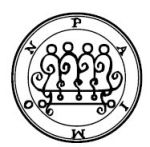
Perhaps the most developed form that sigils have taken is found in the set that are used to represent the 72 spirits in the Goetia, or the Key of Solomon. This grimior first appeared in the 17th Century although most of the material in it is drawn from earlier sources, most notably De Praestigiis Daemonum(The False Hierarchy of Demons) by Johann Weyer and first published in 1563. The significant addition that the Goetia made was to standardize these sigils and to present them as the focal point of a system of ceremonial magick.
This systemization of the symbols that have
become the sigils of modern ceremonial magick came to its fullest in the
fundamental work of occultism published by Francis Barrett in 1801, The Celestial Intelligencer, more commonly known by the title, The Magus.
This book assembles the graphic icons that are used to represent the
planetary forces in magick together in a recognizable format for the
first time. The Magus was known to have had a profound influence on
Eliphas Levi and the Golden Dawn used Barrett’s illustrations as a core
part of their instructional literature for practical magick.
These modern sigils are created by a simple method that traces the
value of each of the letters of a name in the magick square of the
planet that is corresponding. For example the Spirit of Saturn is named
Zazel (זזאל) which is then traced on the magick square of three to
produce a simple lineal figure. The beginning of the sigil is marked by a
small circle and the end is crossed by a short line to terminate the
name. There are simple rules like using a double curve to mark a double
letter and adding a hump to a line to indicate that one crosses over
another. In this way a simple line drawing can be made to represent the
name of any entity.Modern magicians have continued to develop the design and use of sigils and they are often connected with Chaos Magick. The most notable magician to have developed a system for creating and using sigils is Austin Osman Spare who published his method in The Book of Pleasure in 1913. Spare was at one time associated with Aleister Crowley’s OTO and also the Thelemite AA and derived his method from the practice of designing sigils that had developed in the Hermetic Orders of Ceremonial Magick, most notably among the Golden Dawn Adepts of the early 20th Century.
According to Spare’s theory of sigil magick the objective of the operation takes the form of the entity for which the sigil needs to be designed. This is done by synthesizing a graphic symbol out of the words that best express the desired outcome and then using one of several simple methods for raising the energy to charge the sigil.
3. Talismanic Sigils
The third kind of magickal sigils are also based upon the Kameas, or magick squares of the planets. The seals that are used to represent the Planets are slightly more complex designs than the simple sigils of the various lesser entities but are also based upon connecting the numbers in the magick squares. In this instance the designs are intended to touch upon every number in a magick square in a manner that represents a balanced expression of the planetary force being depicted. Because these images are used to show the fundamental nature of a talisman and the authority that has been invoked to be used to direct the spirit that will charge that talisman these symbols are generally classed under the talismanic images along with the magick squares themselves.
Other simple graphic designs that fall under the general heading of talismanic sigils are the lineal figures like the pentagram and the hexagram which are used to express a mathematically specific spiritual force. All of the sigils are used together to create a unique talismanic design that expresses the magician’s objective. The general sigils show the nature and the governance of the ceremony with the specific sigils being the means by which the specific entity involved in the operation is bound to the talisman.
4. Sigillum and Pantacles
In the fullest sense of the word sigils are the sign that the magician uses to represent himself or, more accurately his Great Work. Sigils of this sort often represent the achievement of a specific level of spiritual attainment like Crowley’s Seal of Babalon which represents the incorporation of the secret of Babalon and the Beast into his Great Work. These sigils work because they are used every time the magician performs a ceremony and these seals connect them all into a cohesive series of steps towards enlightenment.
This type of sigil may be composed out of components of all of the other classes of sigil to create a potent and unique symbol that represents the whole course of the magician’s life as is the case when they are used to connect the magician to his Magick Disk. In other instances these uber-sigils are used as a symbolic map of the magician’s universe as it is expressed in a specific system of magick such as John Dee’s Sigillum de Ameth which is the pantacle for the operation of Enochian Magick.
Practical Uses for Sigils
The practical use of sigils extends far beyond any individual ceremony as they are commonly used to mark the magick weapons to indicate the specific powers to which they have been consecrated. For instance the Magick Wand should have the sigils of the Divine Name of Fire, YHVH Tzaboath (יהוה צבאות) and the Archangel Michael (מיכאל) inscribed on it to show where it’s authority is drawn from. Similarly the symbols that the magician uses on his pantacles and lamens must also show his attainments and the authority that he has for directing the entities that the specific sigils used in a ceremony represent.
When sigils are used to represent the objective of a magick ceremony they become the focus of the spiritual or magickal force that is invoked by the operation. In this instance the sigil becomes a symbol of the will of the magician which is treated as the entity which the character is meant to represent. Personifying the desires of the magician and synthesizing them into graphic icons makes it possible to create a symbol for every possible magickal objective but at the same time it allows for a broader interpretation of the meaning of the glyphs and so perhaps a less certain outcome to their operation.
The most common use for sigils is for the construction of talismans and amulets. They are used to represent the entities that are being invoked or conjured during the ceremony that is performed to consecrate the talisman. Talisman designs usually include the magick square of the planet that rules the area of operation of the talisman and so the key to interpreting the sigils that have been used in the design imparts legibility to the symbols that have been used. In this way the sigils that are used to create a talimanic image can be very precise symbolic representations of the magician’s intended objective.
The classical example of using sigils as a talismanic device is in the Goetia where the magician uses the sigil on a talisman that he places in the Magick Triangle as the basis for the spirit that he is to evoke to manifest upon. The same sigil is copied onto an amulet that the magician wears as a lamen and from which he draws the authority to direct the spirits that he conjures to do his bidding.
Sigils are the most elastic and versatile tools available to ceremonial magicians because they can be used to represent almost any kind of entity or objective. Most magician’s collect a number of personal sigils as they develop their skills and progress in their initiations and these arcane symbols are an important part of the practice of ceremonial magick.
(SOURCE: http://ankhafnakhonsu.net/2012/07/25/sigil-basics/ )
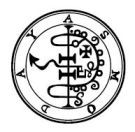


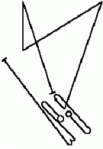
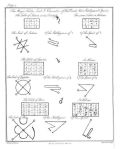
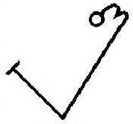
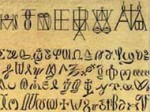
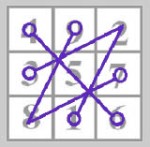

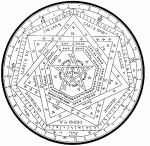

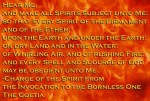
No comments:
Post a Comment